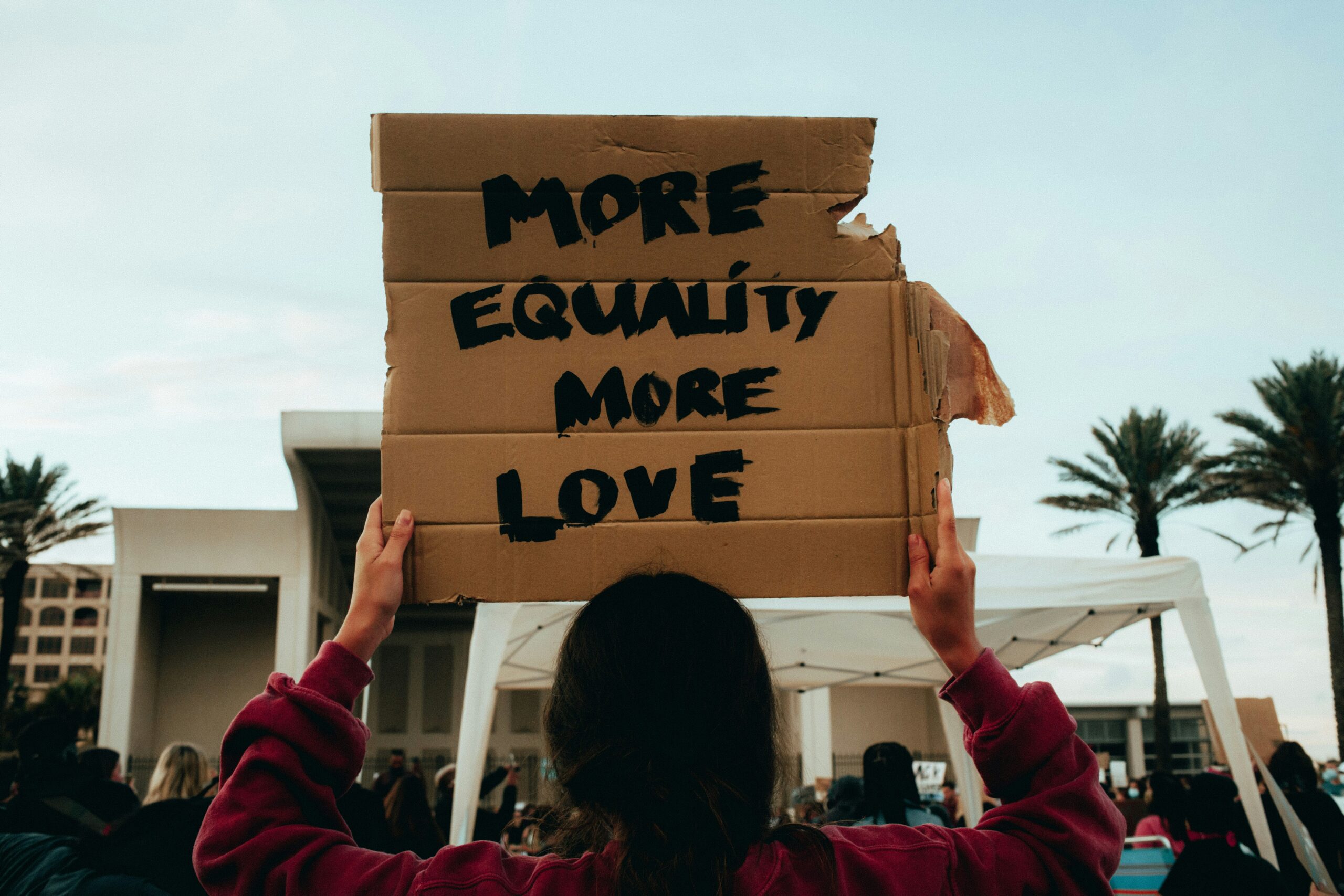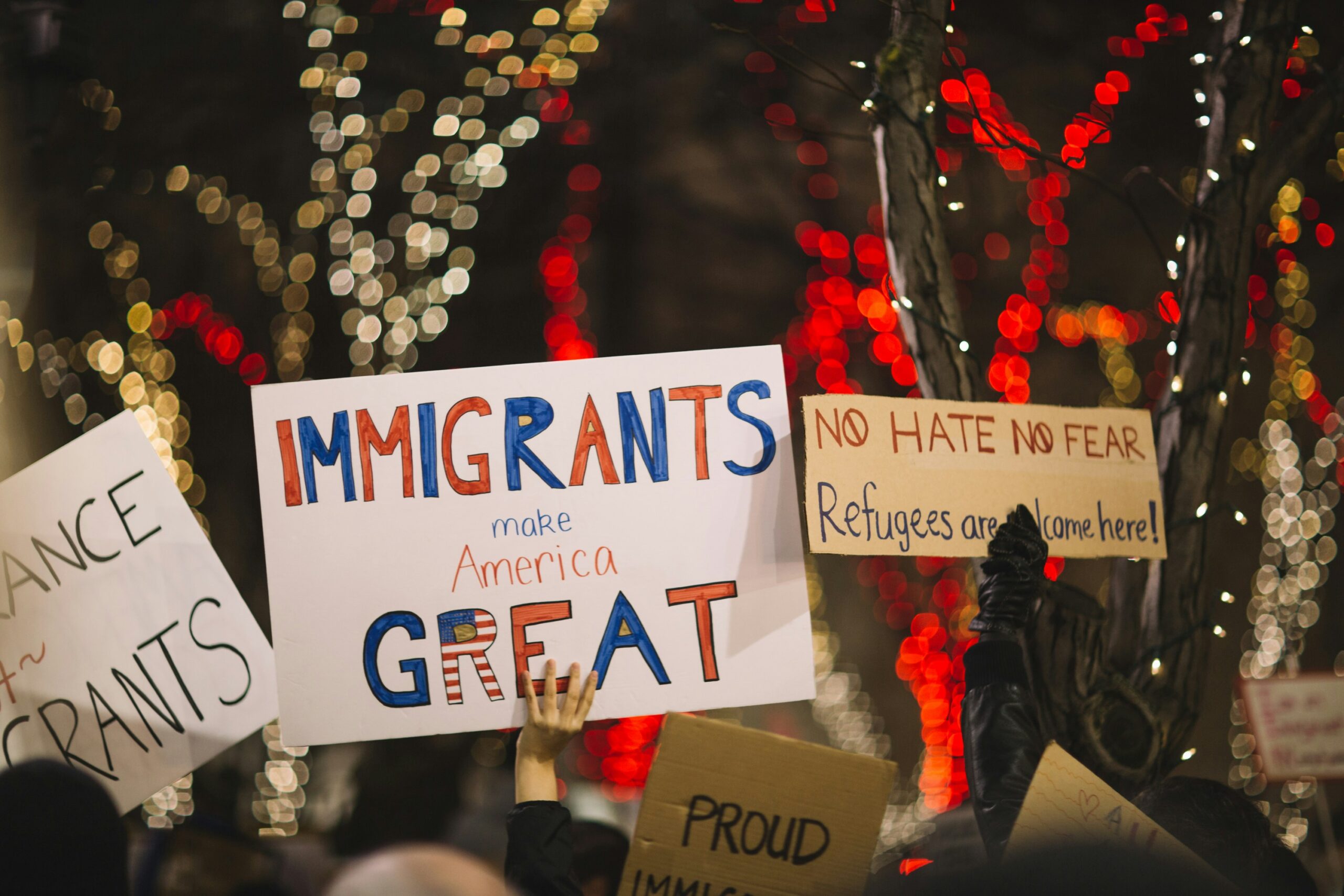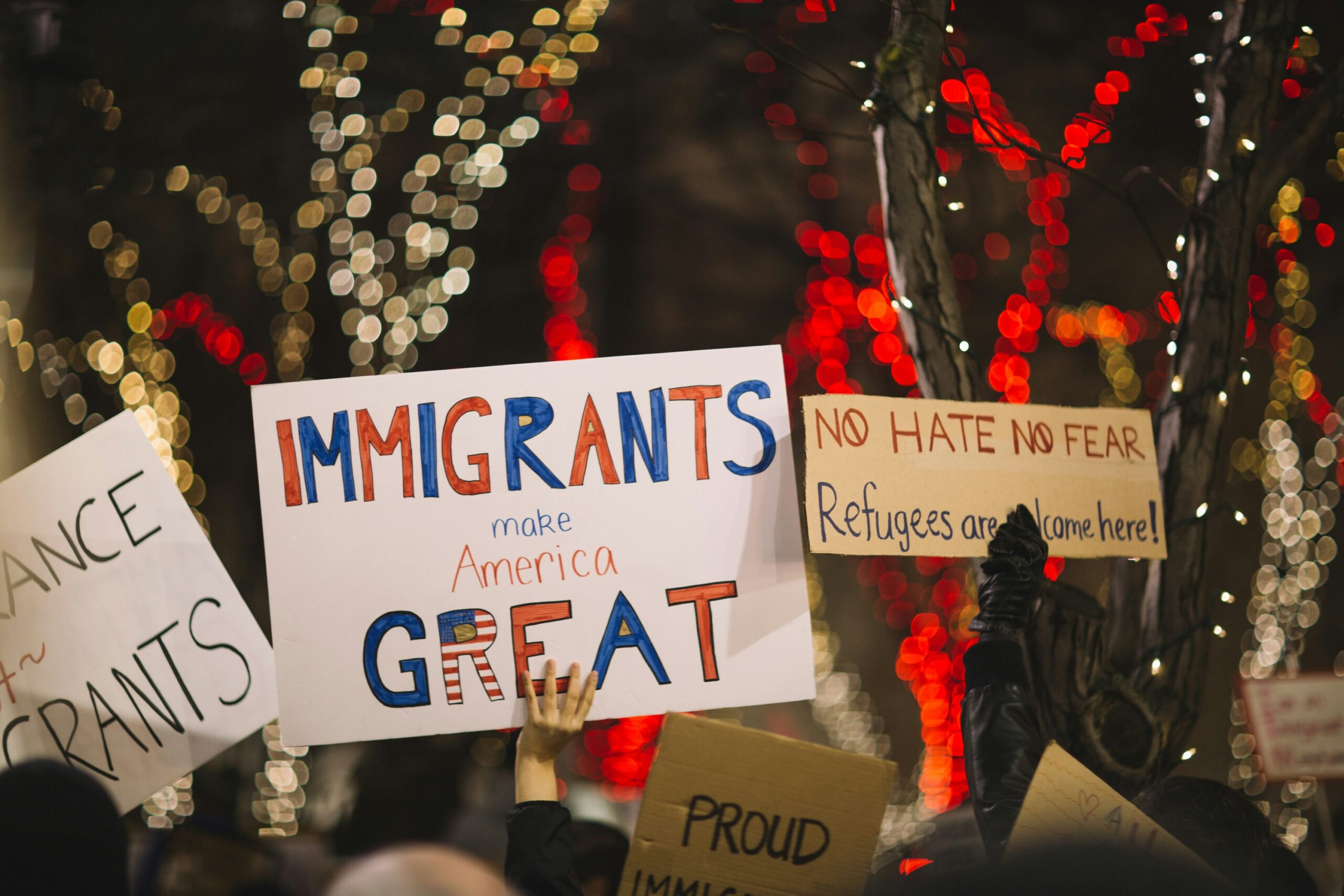Introduction to Black Lives Matter Plaza
Black Lives Matter Plaza is a significant urban space located in Washington, D.C., directly outside the historic St. John’s Episcopal Church and just a stone’s throw from the White House. This plaza stands as a prominent symbol of the ongoing movement for racial justice and equality in the United States. Established in the summer of 2020, the plaza emerged in response to the global outcry against systemic racism propelled by the tragic death of George Floyd. The movement ignited in a collective demand for accountability and systemic reform across various sectors of society.
The transformation of the area into Black Lives Matter Plaza was the result of a series of protests that took place following Floyd’s death, as the nation’s consciousness was heightened to the issues of police brutality and social inequities faced by the African American community. In June 2020, D.C. Mayor Muriel Bowser officially renamed the section of 16th Street NW to honor the Black Lives Matter movement. The city also commissioned a large mural of the phrase “BLACK LIVES MATTER,” boldly painted across the street, serving as a constant reminder of the fight against racial injustices.
Significantly, Black Lives Matter Plaza is not just a geographical location; it has become a gathering point for activists, community members, and individuals who seek to promote the ideals of justice, equality, and inclusiveness. The plaza is an adjacent site for various events, rallies, and artistic expressions that reinforce the powerful message of the movement. Its establishment symbolizes the collective efforts toward fostering a society where racial equity is prioritized. As such, the plaza stands as a testament to the energy of the ongoing fight and serves as a beacon of hope for future generations.
The Historical Context of the Black Lives Matter Movement
The Black Lives Matter (BLM) movement emerged as a response to systemic injustices faced by the Black community, particularly regarding police brutality and racial discrimination. Its origins can be traced back to 2013, following the acquittal of George Zimmerman, who was charged with the fatal shooting of Trayvon Martin, an unarmed Black teenager. This pivotal event sparked widespread outrage and led to the creation of the hashtag #BlackLivesMatter, initially coined by activist Alicia Garza.
In the years that followed, the movement gained momentum, fueled by additional notable incidents that highlighted the urgent need for change. The 2014 deaths of Michael Brown in Ferguson, Missouri, and Eric Garner in Staten Island, New York, catalyzed protests and demonstrations across the United States. These events underscored a recurring theme of injustice faced by African Americans, drawing national attention to the excessive use of force by law enforcement and the persistent inequalities present within the criminal justice system.
Social unrest during this period prompted a burgeoning community of activists and supporters advocating for Black rights and social reform. The BLM movement not only sought to address immediate cases of police violence but also aimed to raise awareness of broader issues such as economic disparities, education inequality, and healthcare access for marginalized communities. This grassroots activism emphasized the interconnected aspects of social justice and sought to bring about systemic change through organized protests, community engagement, and policy advocacy.
As the movement evolved, BLM became a unifying force, fostering solidarity among various social justice initiatives. The protests of 2020, following the murder of George Floyd by a Minneapolis police officer, marked a significant turning point. Demonstrations erupted globally, highlighting the urgent call for justice and reform in policing practices. This growing visibility led to the establishment of BLM Plaza in Washington, D.C., symbolizing both a location for ongoing activism and a testament to the enduring struggle for racial equality.
The Creation of the Plaza: Events and Activism
The Black Lives Matter Plaza, located in the heart of Washington, D.C., emerged as a significant symbol of activism and social change. The plaza’s creation can be traced back to a series of events catalyzed by the tragic death of George Floyd in May 2020. This incident sparked widespread protests across the United States, focusing on systemic racism and police brutality. Demonstrators took to the streets, uniting individuals from various backgrounds to advocate for justice and equality.
As protests intensified, calls for action were amplified. Local community organizations, such as Black Lives Matter D.C. and various grassroots movements, played a pivotal role in mobilizing activists and rallying support in the fight for racial justice. These organizations not only facilitated peaceful demonstrations but also fostered discussions on the necessity of systemic reforms within law enforcement and broader societal structures.
In response to the collective outcry, the D.C. government took significant steps to advocate for racial equity and inclusion. The decision to designate a section of 16th Street NW as Black Lives Matter Plaza was driven by a desire to memorialize the movement and acknowledge the ongoing struggles faced by the African American community. This designation coincided with the painting of the iconic mural that boldly proclaims “Black Lives Matter” on the road leading to the White House, transforming the street into a space of hope and dialogue. This vibrant mural serves not only as a rallying point for activists but also as a testament to the community’s perseverance and resilience.
Key figures, including local leaders and national influencers, collaborated to ensure the plaza’s creation was reflective of their collective vision for change. The convergence of protests, community involvement, and governmental action ultimately led to the establishment of the Black Lives Matter Plaza—an enduring monument to the fight for justice and unity.
Art and Expression: The Murals of Black Lives Matter Plaza
Black Lives Matter Plaza in Washington, D.C., encapsulates a powerful narrative through its striking murals, which serve as both artistic expression and social commentary. The murals, emblazoned with evocative messages, reflect the spirit of solidarity and demand for racial justice. Artists from diverse backgrounds were invited to contribute their perspectives, resulting in a vibrant tapestry of creativity that signifies various dimensions of the Black Lives Matter movement. Each mural conveys distinct themes, ranging from calls for equality to reflections on historical injustices, illustrating the complexity of the ongoing struggle for civil rights.
The bold use of color and intricate designs draws immediate attention, inviting passersby to engage with the art on a deeper level. For instance, some murals feature portraits of influential figures in the fight for justice, while others utilize abstract imagery to evoke emotions of pain, hope, and resilience. This multifaceted expression allows for a more inclusive dialogue about systemic racism and the ongoing fight against it. Through these artworks, the plaza becomes a canvas for collective grief and aspirations for a future grounded in equity and respect.
The significance of these murals extends beyond aesthetic appeal. They are a crucial part of the conversation regarding racial justice, acting as visual representations of community voices. Artists have adapted their styles and messages to reflect the needs and sentiments of the local and national discourse following events of police brutality and systemic oppression. Each brushstroke can be interpreted as a call to action, urging viewers to reflect, engage, and advocate for change. The murals of Black Lives Matter Plaza thus serve as an enduring testament to the power of art in expressing social justice themes and mobilizing communities in the pursuit of equality.
The Plaza as a Gathering Space: Community Impact
Black Lives Matter Plaza, located in the heart of Washington D.C., has emerged as a significant gathering space for community members and activists. This vibrant public area is not only a symbolic representation of the movement advocating for racial justice but also functions as a critical locus for collective action. The plaza serves as a venue for various events that aim to raise awareness, promote dialogue, and foster solidarity among diverse groups devoted to social change. Events such as peaceful protests, memorials, art displays, and community forums take place regularly, drawing participants from all walks of life.
Community reactions to the plaza have been overwhelmingly positive, as it offers a physical space for individuals to express their feelings, share their stories, and unify around shared objectives. Since its inception, the plaza has become a gathering point during significant social movements, allowing activists to voice their concerns openly and encouraging community engagement. The presence of local artists who have contributed murals and various forms of public art further enhances the plaza’s role, transforming it into a dynamic cultural space that reflects the ongoing struggle for equality.
The plaza’s impact extends beyond the events it hosts; it serves as a catalyst for conversations surrounding systemic issues of racism and injustice. As gatherings draw diverse participants, there is an opportunity for cross-cultural dialogue and alliance-building among different community members. Moreover, the plaza plants seeds for grassroots initiatives, inspiring individuals to participate in civic activities such as voter registration drives, community service projects, and educational workshops that empower and inform the public.
In essence, Black Lives Matter Plaza acts as a powerful reminder of the importance of collective action and unity in the pursuit of social justice, reinforcing the notion that change is achievable when communities come together in solidarity.
Global Influence of the Black Lives Matter Plaza
The establishment of the Black Lives Matter Plaza in Washington D.C. has transcended its local significance, emerging as a powerful symbol of change and unity that resonates globally. Since its inception, the plaza has inspired solidarity movements across various countries, igniting discussions about racial justice and equality. The phrase “Black Lives Matter” has become a rallying cry, echoing not only in the United States but also across continents, where communities have found common ground in shared struggles against systemic racism.
For instance, many countries have organized events that mimic demonstrations and installations reminiscent of the Black Lives Matter Plaza, creating their own unique expressions of solidarity. In places like the United Kingdom, Canada, and Australia, public gatherings have erupted in response to the call for justice, leading to heightened awareness of racial inequalities and prompting national conversations on these pressing issues. This global phenomenon signifies a critical acknowledgment of the widespread need for change in societal attitudes towards race and justice.
Moreover, the impact of the plaza has sparked a wave of discourse concerning policing practices, social inequality, and governmental accountability on an international scale. Activists from various nations have adopted the principles of the Black Lives Matter movement, incorporating them into their own advocacy efforts, thus fostering a broader dialogue on human rights and systemic injustice. Academic institutions and community organizations have also begun studying the plaza’s influence, examining how a localized movement can spur worldwide initiatives centered on equity and reparative justice.
In essence, the Black Lives Matter Plaza serves not only as a beacon for those seeking justice in America but also as a catalyst for global discussions on racial equity. Its existence underscores the interconnectedness of movements advocating for equity and the profound influence that localized actions can have in unifying people around a common cause. This collective effort toward championing social justice illustrates the power of grassroots movements in making significant strides toward tangible change across the globe.
Challenges and Criticisms Faced by the Black Lives Matter Movement
The Black Lives Matter (BLM) movement, which emerged in response to systemic racism and police brutality, has encountered various challenges and criticisms since its inception. Among the prominent obstacles is political opposition, with some government officials and political groups framing the movement as divisive rather than a call for justice. This political pushback often manifests in legislative efforts aimed at undermining the movement’s objectives, thereby complicating the pursuit of social reform.
Moreover, the portrayal of the Black Lives Matter movement in media has drawn its share of criticism. Mainstream narratives frequently misrepresent the movement’s goals, leading to public misconceptions. For instance, some media outlets have emphasized incidents of violence at protests rather than the peaceable protests advocating for change. This skewed representation can undermine the movement’s efforts, impacting public perception and support. The framing of protests is particularly crucial, as that can shape how potential supporters view BLM’s mission and objectives.
Additionally, the BLM movement grapples with internal disagreements that can hinder its effectiveness. With a decentralized structure, various factions may emerge, each with differing priorities and strategies. While diversity of thought can foster rich dialogue and solutions, it can also lead to disunity and complicate collective action. Activists may sometimes find themselves navigating conflicting agendas, which might detract from the singular mission to combat racial injustice.
Overall, while the Black Lives Matter movement has made significant strides in raising awareness about racial inequality, it continues to face formidable challenges. These include political opposition, media misrepresentation, and internal disagreements, all of which can complicate its pursuit of lasting change and unity.
Future of Black Lives Matter Plaza: Ongoing Relevance
The Black Lives Matter Plaza stands as a powerful emblem of social justice, serving not only as a physical space but also as a focal point for ongoing discussions about racial equality and inclusivity. As society evolves, the plaza is poised to maintain its relevance amidst the dynamic landscape of activism. This location has already shown its potential for galvanizing community support and collectively raising awareness of systemic issues that impact marginalized groups.
The future of Black Lives Matter Plaza hinges on the continuity of movements advocating for racial justice. Activists and organizations may utilize the plaza as a backdrop for future demonstrations, events, and dialogues aimed at addressing persistent inequalities. Regular gatherings and peaceful protests, alongside art exhibitions and educational initiatives, could foster a richer understanding of the challenges that communities of color face. Such activities will contribute to a resilient culture of activism that extends beyond the visual impact of the mural adorning the plaza.
Moreover, the plaza’s role in public discourse is likely to evolve, fostering an environment where conversations surrounding race and equity are not only encouraged but prioritized. As more individuals and groups engage in these crucial dialogues, the plaza can serve as a site for collective learning and empowerment. Events may spotlight intersectional issues, allowing diverse voices to share their experiences and insights, thus broadening the scope of discussions around equality.
In an ever-changing societal context, the Black Lives Matter Plaza remains a critical site for activism and dialogue. Its ongoing significance will adapt to reflect the pressing needs of the time, ensuring that messages of unity and justice are not only heard but also acted upon. The plaza, therefore, is likely to remain a vital component of the narrative around social change and a continuous reminder of the work that still lies ahead.
Conclusion: The Legacy of Black Lives Matter Plaza
The Black Lives Matter Plaza stands as a poignant symbol of the ongoing struggle for racial equity and social justice. As a site of significant protest and communal gathering, it has become a powerful representation of hope, resilience, and unity. Its origins were deeply rooted in the movements advocating for Black lives, emphasizing the urgent need for change in a society marred by systemic racism. The murals and the very essence of the plaza encapsulate the voices of countless individuals who have rallied for justice throughout history.
This space not only acknowledges the challenges faced by marginalized communities but also fosters a sense of belonging and togetherness among those who visit. The ongoing events held at Black Lives Matter Plaza highlight its role as a focal point for activism, reflecting the persistent dialogue surrounding race and equality. Additionally, it serves as a reminder of the collective efforts needed to dismantle the structures that perpetuate inequality. The plaza has undeniably become a site where the past meets the present, acting as both a memorial and a catalyst for change.
Looking ahead, the legacy of Black Lives Matter Plaza will undoubtedly influence future movements aiming for social reform. As more individuals engage with the ideals represented within this space, there is an opportunity for further cultural change. The lasting impact of the plaza underscores the significance of community activism, encouraging new generations to continue the fight for justice. Together, these elements contribute to a growing legacy that not only honors those who came before but also inspires hope for a more equitable future.



